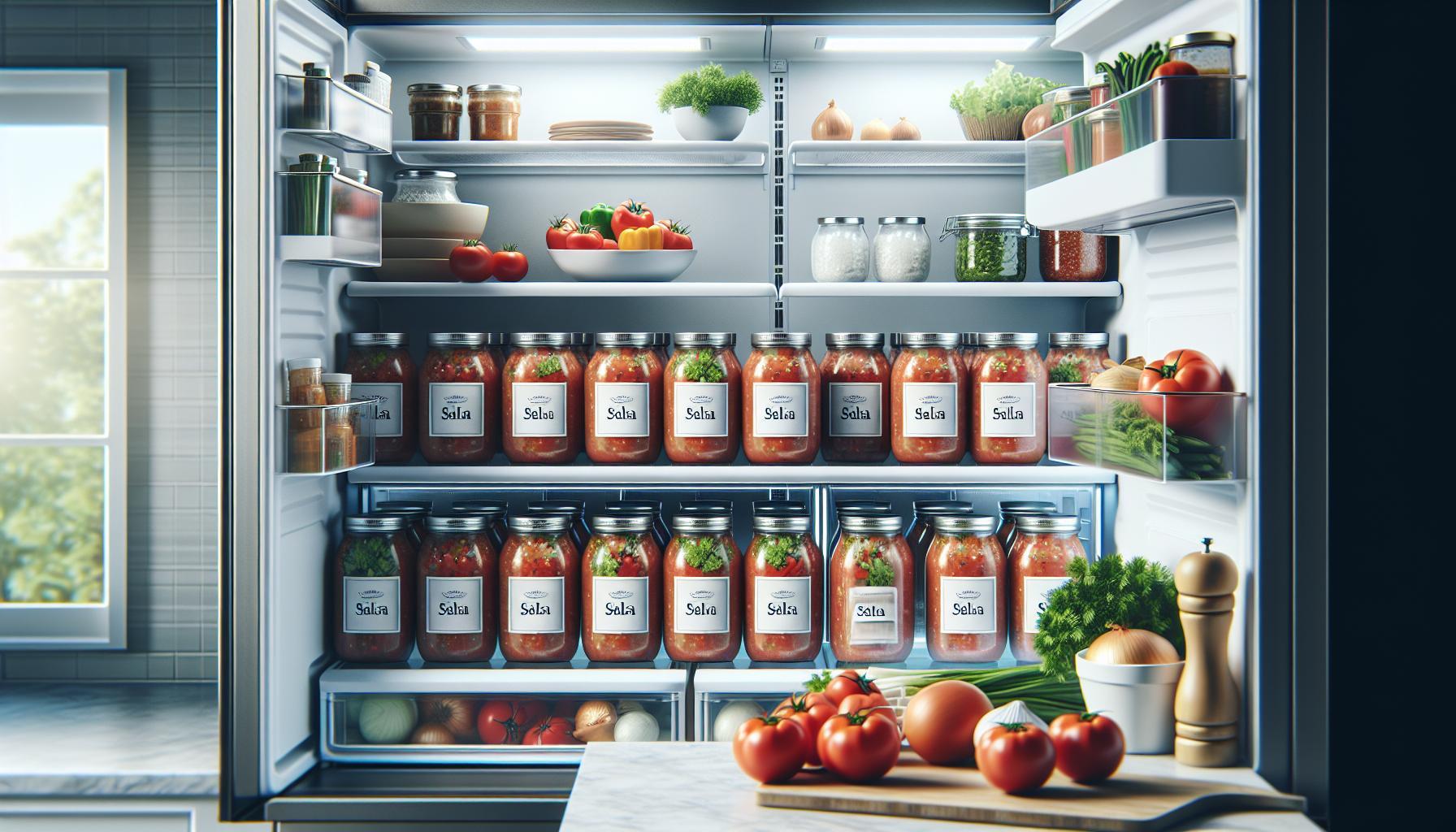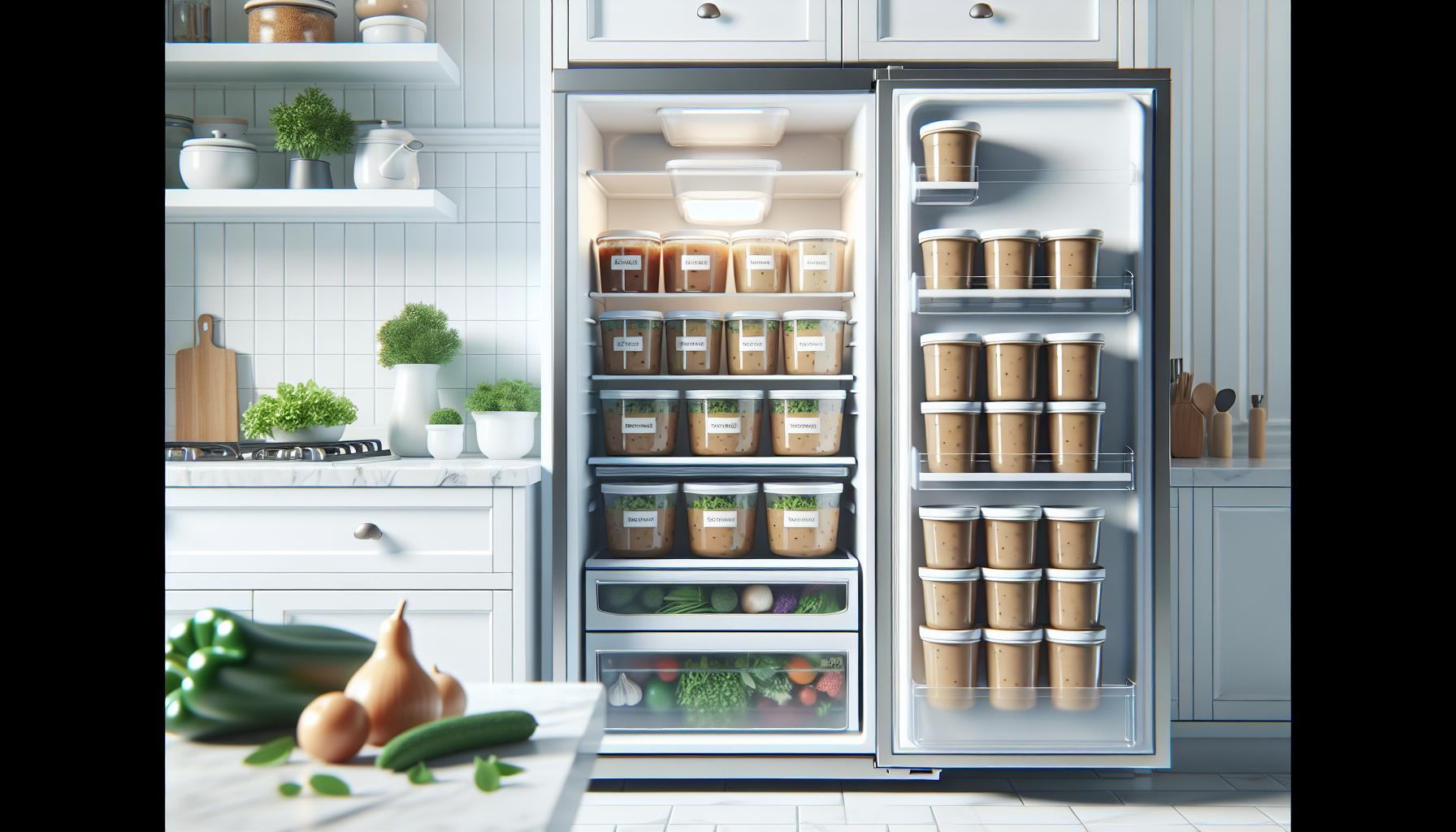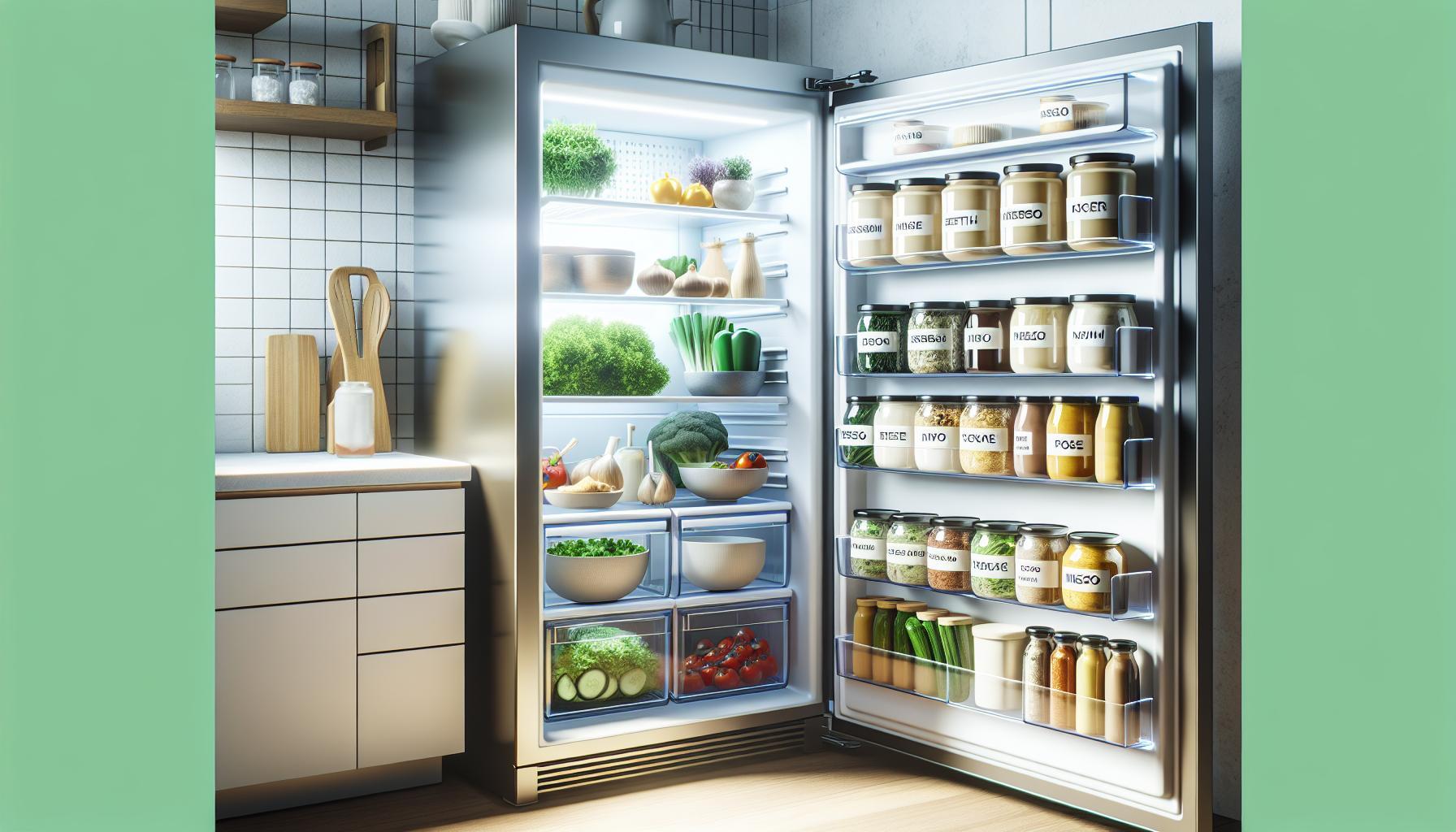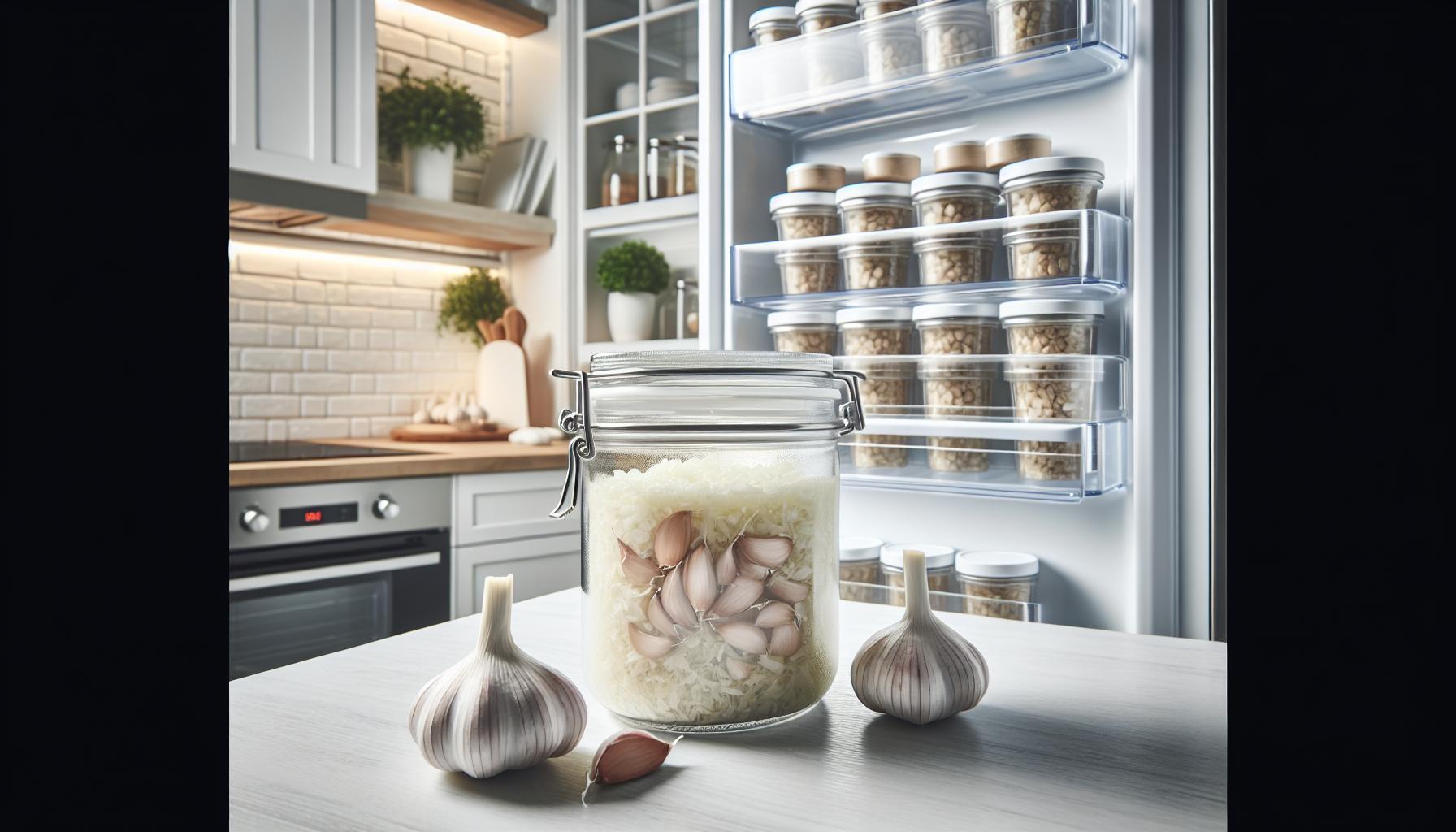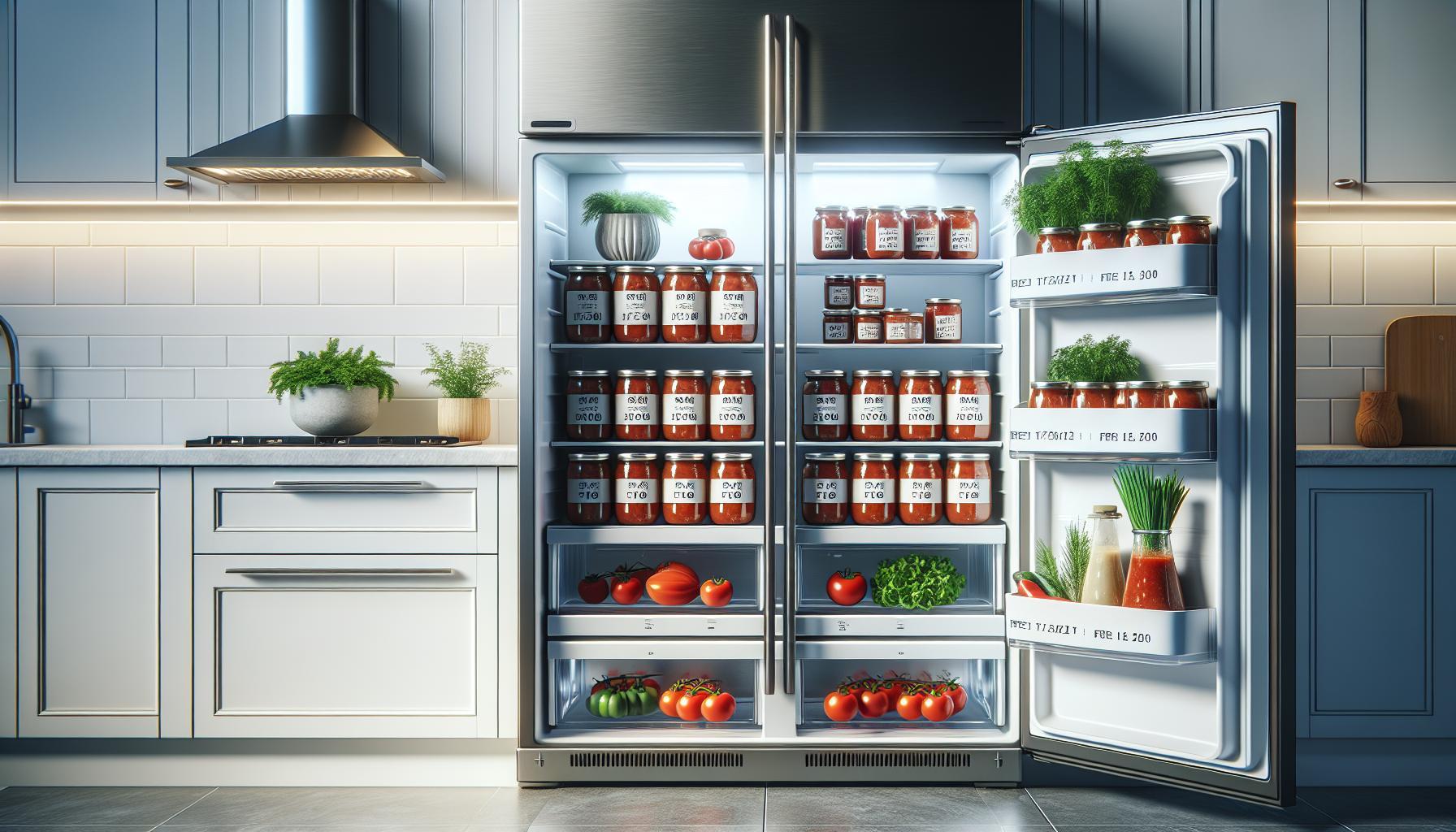Salsa is a beloved accompaniment to many dishes, but you might be wondering just how long it stays fresh in your fridge. Understanding the lifespan of salsa not only helps you enjoy your favorite dip at its peak flavor but also ensures you prioritize food safety. Proper storage practices can prevent spoilage and waste, allowing you to savor every last bite.
Whether you’ve made a fresh batch or opened a store-bought jar, knowing when salsa is no longer safe to consume is crucial. This guide will cover essential storage tips, ideal timelines, and signs of spoilage so you can make informed decisions. Get ready to dive into the essentials of salsa preservation and ensure your culinary creations stay both delicious and safe!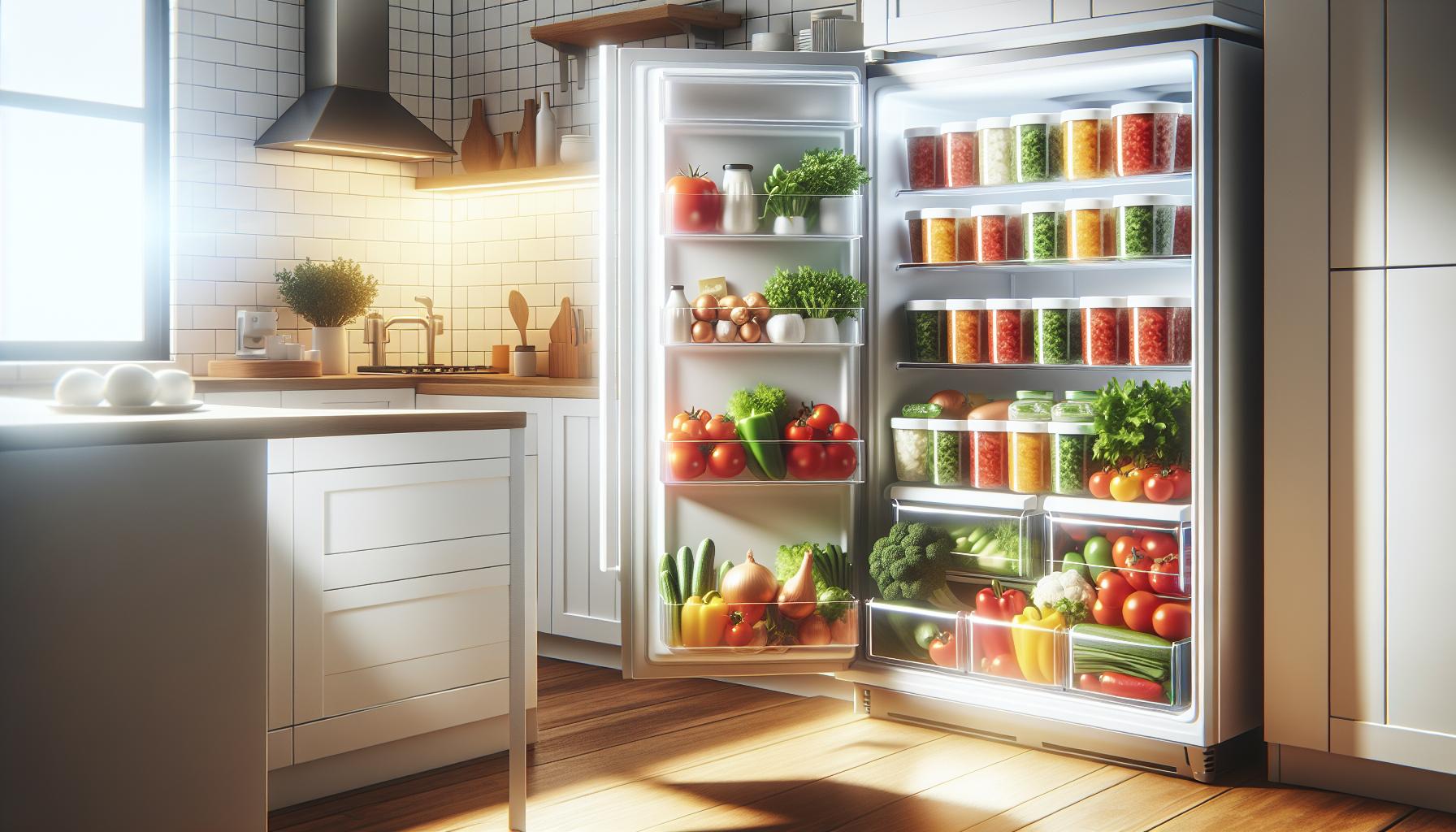
How Long Does Salsa Stay Fresh in the Fridge?
Salsa, a vibrant and flavorful addition to many dishes, can remain fresh in the refrigerator for a surprisingly long time if stored properly. When homemade, most fresh salsas can typically last about 5 to 7 days in the fridge. This timeframe can vary depending on the ingredients used and how well the salsa is stored. For commercial salsas, the shelf life may be longer, often lasting up to several weeks or even months when unopened, due to preservatives that help maintain freshness.
To optimize freshness, always store salsa in an airtight container. This reduces exposure to air and helps prevent spoilage. Remember to keep salsa in the main body of the refrigerator rather than the door, as the temperature is more stable and colder away from the frequent temperature fluctuations caused by opening and closing the door.
When it comes to the sustainability of salsa in your fridge, pay close attention to its ingredients. Salsas containing fresh produce, such as tomatoes and cilantro, may spoil faster than those with vinegar or canned components. As a general guideline, homemade salsa with a high moisture content-such as pico de gallo-should be consumed within a week, while salsas made with more stable ingredients, like roasted or canned tomatoes, may last longer. If you’re ever in doubt about whether your salsa is still good, trust your instincts; when in question, it’s best to err on the side of caution and discard it.
Understanding Salsa Expiration Dates
Understanding how long salsa remains safe and flavorful is essential for both food safety and culinary enjoyment. Fresh salsa, especially those made with high-moisture ingredients like tomatoes and peppers, typically lasts 5 to 7 days when stored properly in the refrigerator. This relatively short shelf life is due to the chemical reactions and microbial growth that can occur from exposure to air and varying temperatures. Utilizing proper storage techniques can therefore help extend this timeframe.
For homemade salsa, the shelf life depends on specific ingredients. Salsas containing fresh herbs, such as cilantro, or fruits like tomatoes are more perishable. In contrast, variations with vinegar or canned vegetables may last longer, often up to two weeks. To accurately assess salsa freshness, labeling containers with preparation dates and ingredients can be a useful practice. This helps in tracking how long it has been in the fridge and understanding the possible risks associated with keeping it longer than recommended.
When considering commercial salsa, its expiration dates can vary significantly based on preservatives and packaging. Unopened jars can last several months to even years, while once opened, those salsas should be consumed within a similar timeframe as homemade varieties-generally within a week or two. Always check the “best by” date printed on the label for guidance.
To ensure safety, keep an eye on the appearance and smell of your salsa. Changes such as separation, mold formation, or sour odors indicate spoilage and it’s best to discard the salsa if any of these signs are present. Awareness of these details helps you enjoy your salsa without risking your health due to expired or spoiled ingredients.
Signs Your Salsa Has Spoiled
Fresh salsa can be a delightful addition to many meals, but it’s essential to know when it has gone bad to ensure your safety and enjoyment. Spoilage can occur due to the natural degradation of ingredients and microbial growth. Here are some key indicators that your salsa has spoiled and should be discarded.
Firstly, pay attention to the appearance of your salsa. If you notice any mold forming on the surface, that is a clear red flag that the salsa should not be consumed. Additionally, separation of liquids-where water starts to pool on top-can indicate spoilage, especially if accompanied by an unappetizing look. Fresh salsa should maintain a consistent texture and vibrant colors-if it appears dull or has developed an off-color hue, it’s better to err on the side of caution.
Secondly, smell is a critical factor in evaluating freshness. Salsa that has soured or developed an off-putting odor is no longer safe to eat. Fresh salsa should have a crisp, tangy scent, while a rancid or overly fermented smell suggests that spoilage has occurred. Trust your nose; unpleasant smells are often one of the first signs of unsafe food.
Lastly, taste can also be a determinant, though it’s advisable to prioritize safety first. If your salsa tastes significantly different than when it was freshly made-too sour or otherwise off-it’s best to discard it immediately. Remember, an unpleasant taste can be a reflection of harmful bacteria development.
In summary, always check your salsa for any visible mold, unpleasant smells, and strange tastes before consuming. By staying vigilant and following these guidelines, you can ensure that you’re enjoying fresh, flavorful salsa while keeping yourself safe from foodborne illnesses.
Safe Storage Practices for Homemade Salsa
To maintain the freshness and safety of homemade salsa, implementing effective storage practices is crucial. Homemade salsa, particularly when made from fresh vegetables and herbs, contains moisture and organic materials that can foster bacterial growth if not stored properly. Ideally, salsa should be refrigerated immediately after preparation to minimize spoilage. Here are key practices to ensure your salsa remains safe and delicious for the longest possible time.
Refrigeration Methods
Immediately after preparing your salsa, transfer it to an airtight container. This prevents exposure to air, which can lead to oxidation and spoilage. Glass jars or plastic storage containers work well, but ensure they have tight-fitting lids. Once sealed, store the salsa in the refrigerator. Properly stored, homemade salsa can last for about 3 to 5 days in the fridge. Always label the container with the date it was made to keep track of freshness.
Temperature Control
Maintain your refrigerator’s temperature at or below 40°F (4°C) to slow bacterial growth. For optimal freshness, avoid placing salsa near the door where temperatures fluctuate with frequent opening and closing. Instead, store it on a middle or lower shelf where the temperature is more consistent.
Batch Preparation Considerations
If you anticipate making a larger batch of salsa, consider portioning it out into smaller containers instead of one large one. Smaller containers chill faster and make it easier to access the amount you need without exposing the entire batch to air and temperature changes each time you open the container.
Avoiding Contamination
Always use clean utensils when serving or portioning salsa to prevent cross-contamination. If you notice any signs of spoilage-such as an off smell, color changes, or mold-it’s essential to discard the entire batch rather than risking foodborne illness.
By following these safe storage practices, you can extend the life of your homemade salsa, ensuring it remains fresh and safe for your meals.
Commercial Salsa vs. Homemade Salsa Freshness
When it comes to the freshness of salsa, there’s a distinct difference between homemade and commercial varieties. While both can add a delightful kick to your meals, understanding their storage lifespan and freshness is crucial for food safety and flavor preservation.
Homemade salsa, crafted from fresh ingredients, usually boasts a vibrant taste but has a shorter shelf life than its commercial counterpart. Typically, once prepared, homemade salsa should be consumed within 3 to 5 days when stored in the fridge. The absence of preservatives means it is susceptible to bacterial growth, particularly from moisture-rich vegetables like tomatoes and onions. For optimal freshness, homemade salsa should be kept in airtight containers, and serving utensils should always be clean to avoid contamination.
On the other hand, commercial salsa often employs preservation techniques, including pasteurization and the addition of preservatives. This allows it to stay fresh in the fridge for a longer period, often around 1 to 3 weeks after opening, depending on the brand. Even unopened commercial salsa can last several months or longer beyond its printed “best by” date when stored in a cool, dark place. Typically, these jars will last a few weeks in the refrigerator once opened, but consumers should always check the label for specific guidance.
The differing ingredients used in commercial salsa can also impact freshness. Many brands contain vinegar and other preservatives that help inhibit bacterial growth, thus extending the product’s life. Conversely, homemade salsa often relies on the freshness of its ingredients, which can degrade quickly due to oxidation and spoilage. Therefore, if you’re looking for maximum flavor and safety, consider your salsa’s origin when planning your meals. Opt for freshly made salsa if you intend to enjoy it right away, but keep a jar of commercial salsa on hand for those on-the-go moments that require a longer-lasting solution.
How to Extend the Shelf Life of Salsa
To make the most of your salsa and keep it fresh for as long as possible, there are several effective strategies you can employ. First and foremost, ensuring that your salsa is stored in an airtight container is crucial. This prevents exposure to air, which can lead to oxidation and spoilage. When possible, opt for glass jars with tight-sealing lids, as they can help maintain flavor and freshness better than plastic alternatives.
Another important practice is to minimize exposure to moisture and contaminants. Always use clean utensils when serving salsa and avoid double-dipping. You can further extend freshness by storing your salsa in the coldest part of the refrigerator and keeping it away from the door, which is exposed to temperature fluctuations. For homemade salsa, consuming it within 3 to 5 days is ideal, so consider dividing larger batches into smaller containers. This way, you only expose part of the salsa to air when opening, while the remainder stays sealed.
Incorporating ingredients with natural preservative qualities can also enhance salsa’s longevity. For example, adding more acid, such as lime juice or vinegar, can create an environment less conducive to bacterial growth. While you may enjoy the freshness of ripe tomatoes and onions, consider using variations like roasted vegetables or fruits that can hold up better in terms of longevity.
Lastly, if you find yourself with excess salsa that you cannot consume within the recommended timeframe, freezing is a viable solution. Freezing salsa not only preserves its flavor but can also allow you to enjoy it later. Just be sure to use suitable containers or freezer bags, leaving some space for expansion. When thawing, do so in the refrigerator rather than at room temperature, to maintain safety and quality. By following these tips, you can enjoy your salsa longer while ensuring you maintain the best possible flavor and safety.
Canned Salsa: Shelf Life and Storage Tips
Canned salsa offers convenience and an extended shelf life that makes it a popular choice for many households. Typically, an unopened can of salsa can last for approximately 1 to 2 years when stored in a cool, dark place. However, it’s important to note that its quality may diminish over time. Always check the “best by” date on the label as a guideline for peak freshness.
Once opened, canned salsa should be transferred to an airtight container and refrigerated. It’s best to consume it within 5 to 7 days to enjoy optimal flavor and quality. If you notice any signs of spoilage, such as off odors, changes in color, or mold, it’s essential to discard the salsa to ensure safety.
Storage Tips for Canned Salsa
- Keep It Cool: Store unopened cans in a pantry or cupboard away from heat sources.
- Seal It Up: After opening, seal salsa in a glass or plastic container with a tight-fitting lid to minimize air exposure.
- Avoid Temperature Fluctuations: Always return salsa promptly to the refrigerator after serving to maintain a consistent temperature.
When considering the safety and quality of canned salsa, following these guidelines can help you enjoy its flavor while minimizing food waste and risk. Remember that proper storage is key to extending the shelf life of your salsa, both before and after opening.
Impact of Ingredients on Salsa Longevity
The longevity of salsa in your fridge significantly depends on its ingredients. Fresh salsa, particularly varieties like pico de gallo, is made predominantly from raw vegetables such as tomatoes, onions, and peppers. These ingredients impart freshness but also contribute to a shorter shelf life. When prepared at home, this type of salsa is best consumed within 3 to 5 days when stored in an airtight container in the refrigerator. The moisture content contains live enzymes that can cause spoilage, leading to a loss of flavor and texture over time.
Conversely, salsas made with vinegar or citrus juice have a longer shelf life. The acidity from these ingredients acts as a preservative, allowing the salsa to last longer-often up to 1 to 2 weeks. Ingredients like corn or beans, which are also high in moisture, can reduce the overall shelf life of salsa, as they may ferment or spoil more quickly than other components. To maximize the freshness of your salsa, consider these storage strategies:
- Acidity Matters: Incorporate ingredients like lime juice or vinegar to enhance preservation and flavor.
- Use Fresh Ingredients: The higher the quality of your vegetables, the longer they will last in the salsa.
- Monitor Texture: If your salsa starts to separate or becomes overly watery, it’s a sign that it is nearing its spoilage point.
- Keep it Airtight: Use tight-sealing containers to minimize air exposure, which can hasten spoilage.
When preparing or storing salsa, always keep in mind that the combination and quality of ingredients significantly influence its shelf life and overall safety. This knowledge equips you to enjoy your homemade salsa with confidence, ensuring you savor the best of its flavors while minimizing waste.
Salsa Safety: Ensuring Food Quality and Health
To maintain the quality and safety of your salsa, understanding food safety practices is vital. Fresh salsa can be a delicious addition to many meals, but improper handling and storage may lead to spoilage and foodborne illnesses. Ensuring that your salsa stays fresh means paying close attention to how it is prepared, stored, and served.
First and foremost, temperature is critical. Keep homemade salsa refrigerated at all times. The USDA recommends that perishable foods, including salsa, should not be left out at room temperature for more than two hours; if the ambient temperature exceeds 90°F, this time drops to just one hour. The cooler temperatures of a refrigerator inhibit the growth of harmful bacteria. Store your salsa in a clean, airtight container to limit oxygen exposure, which can accelerate spoilage.
When it comes to signs of spoilage, it’s crucial to trust your senses. If you notice any off-odors, changes in color, or mold growth, it’s best to discard the salsa immediately. Additionally, potential contamination can occur if utensils used to scoop out salsa touch other foods; always use clean utensils to maintain safety. Remember that even if salsa seems safe after a few days, the freshness diminishes over time, so aim to consume it within 3 to 5 days for maximum flavor and safety.
For long-term preservation, consider freezing your salsa. When done correctly, freezing can extend its shelf life for several months, allowing you to enjoy your salsa well beyond the typical refrigerator timeline. Just ensure that you leave space in the container for expansion as the salsa freezes. Implementing these practices not only enhances your culinary experience but also ensures that the salsa remains safe and enjoyable for you and your guests.
Best Practices for Reheating Salsa
To enjoy your leftover salsa-whether homemade or store-bought-safely and deliciously, reheating it properly is essential. Salsa can be used as a sauce, condiment, or ingredient in various dishes, but the way you reheat it can significantly affect its texture and flavor. Unlike some foods, salsa is best consumed chilled or at room temperature, especially if it contains fresh ingredients like tomatoes and cilantro that can become mushy when heated. However, if you prefer it warm, follow these best practices to ensure safety and quality.
When reheating salsa, the microwave is a quick and convenient option. Place the salsa in a microwave-safe container and cover it loosely with a microwave-safe lid or paper towel. Heat it in short intervals-about 30 seconds-stirring in between to ensure even warming. This prevents overheating, which can lead to a change in texture and diminish flavor. Aim for a temperature of at least 165°F (74°C) to ensure it is heated adequately for safety.
For a stovetop method, pour the salsa into a saucepan over low to medium heat. Stir frequently to prevent it from sticking or burning. This method allows for a more controlled heating process, helping retain the salsa’s vibrant colors and fresh taste. If your salsa has thickened after refrigeration, consider adding a splash of water or broth while reheating to achieve your desired consistency.
When reheated, consume the salsa immediately and avoid returning any leftovers to the fridge, as this could lead to bacteria growth. If salsa does not get consumed in one sitting, it may be best to freeze it for later use rather than reheating it multiple times. By following these guidelines, you can elevate your salsa culinary experience while ensuring safety and flavor retention.
Creative Ways to Use Leftover Salsa
Salsa isn’t just a dip; it’s a versatile ingredient that can elevate various dishes. After enjoying your favorite salsa, you might find yourself wondering how to creatively incorporate any leftovers into your meals. Luckily, there are numerous delicious ways to put that salsa to good use, ensuring that nothing goes to waste while refreshing your culinary repertoire.
Start by using salsa as a topping to enhance the flavor profile of grilled meats. A zesty salsa can be the perfect complement to grilled chicken, pork, or fish. Simply spoon it over the cooked protein just before serving; the freshness of the salsa will add a dynamic flair. You can also mix it into mashed avocado for a robust guacamole. The combination of creamy avocado and tangy salsa creates an irresistible spread great for sandwiches or as a dip for chips.
Another delightful option is to stir leftover salsa into pasta. When cooking your pasta, reserve a little of the cooking water, drain the rest, and toss the warm pasta with salsa for a quick, flavorful sauce. This can be a colorful and nutritious dish that bursts with flavor and can be easily customized by adding vegetables, proteins, or even cheese.
Additionally, consider incorporating salsa into breakfast ideas. It can be a fantastic topping for scrambled eggs or omelets, adding a touch of freshness to your morning meal. For a heartier option, try using salsa in breakfast burritos, combining it with eggs, beans, cheese, and wrapping it all up in a tortilla.
Lastly, if you find yourself with a significant amount of leftover salsa, consider freezing it for later use. Pour the salsa into an ice cube tray and freeze until solid. Once frozen, transfer the salsa cubes to a sealable bag and store them in the freezer. These cubes can be easily added to soups, stews, or chili, boosting flavor in recipes throughout the year.
By thinking outside the box, you can transform leftover salsa into new, exciting dishes, making the most of your ingredients while ensuring safety and quality. Always remember to check for any signs of spoilage before using your leftovers, and enjoy the myriad ways to incorporate this delicious condiment into your meals.
Frequently Asked Questions
Q: How can I tell if salsa has gone bad?
A: To check if salsa has spoiled, look for off smells, discoloration, or mold on the surface. Additionally, a change in texture or excessive separation of ingredients indicates spoilage. Always err on the side of caution-if in doubt, discard it.
Q: Can I store salsa in a glass container?
A: Yes, salsa can be stored in a glass container. Glass is non-reactive and can help maintain freshness. Ensure the container is airtight to prevent moisture and odors from other foods in the fridge from affecting the salsa.
Q: How long does homemade salsa last unopened in the fridge?
A: Unopened homemade salsa can typically last about 2 to 4 days in the fridge. Once opened, it should be consumed within a week for best taste and safety, as noted in our section on safe storage practices.
Q: Does the type of ingredients affect salsa’s shelf life?
A: Yes, ingredients can impact salsa’s freshness. For instance, salsas with fresh herbs or dairy tend to spoil faster, while those using vinegar or acidic ingredients may last longer. Check our section on the impact of ingredients for more details.
Q: Can I freeze fresh salsa, and how does it change?
A: Yes, you can freeze fresh salsa, but its texture may change upon thawing, becoming more watery. To maintain flavor, consider freezing it in batches or using ice cube trays. Refer to our freezing guide for step-by-step instructions.
Q: Are there food safety guidelines for homemade salsa?
A: Yes, follow these food safety guidelines: store salsa in clean, airtight containers, refrigerate within two hours of preparation, and consume within a week. Review our section on salsa safety for comprehensive advice on ensuring food quality.
Q: How do I reheat salsa without affecting its taste?
A: To reheat salsa without compromising its flavor, warm it gently on the stove over low heat, stirring continuously, or microwave it in short intervals. Avoid boiling, as it may alter the fresh taste. See our best practices for reheating salsa for more tips.
Q: Can I mix different types of salsa for a unique flavor?
A: Yes, combining different types of salsa can create exciting new flavors. Just ensure they have similar freshness levels to maintain flavor and safety. Explore creative ways to use leftover salsa for inspiration.
Key Takeaways
Now that you know how long salsa lasts in the fridge and the best practices for keeping it fresh and safe, you can confidently enjoy your favorite dips without worry. Remember, homemade salsa typically stays fresh for about 5 to 7 days. For more delicious recipes that pair perfectly with salsa, check out our guide on making Easy Homemade Salsa or learn how to prepare a classic

